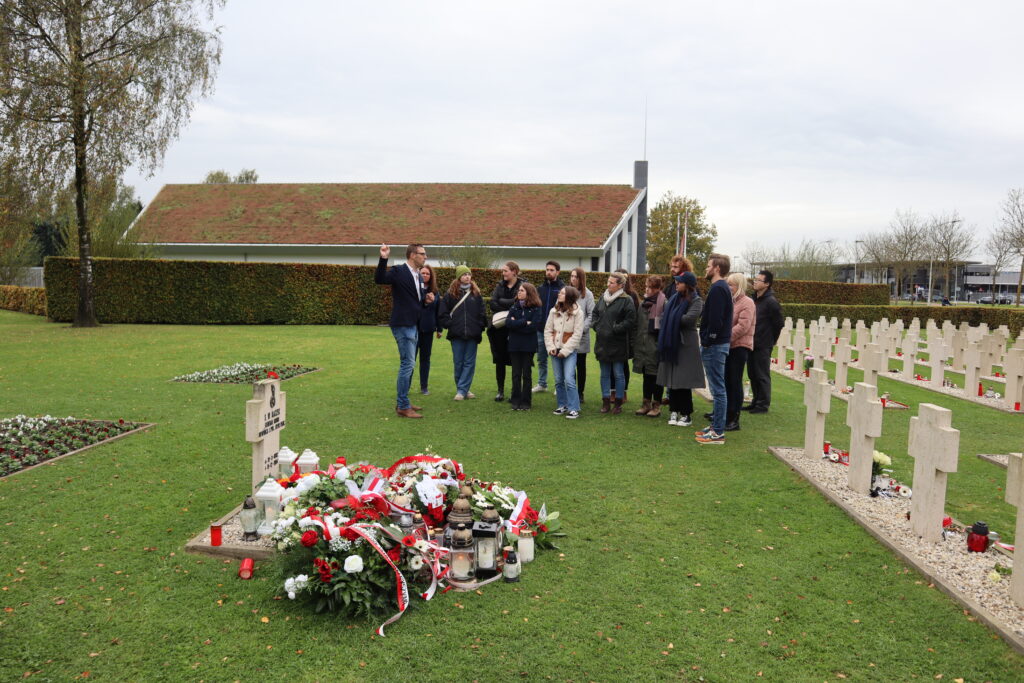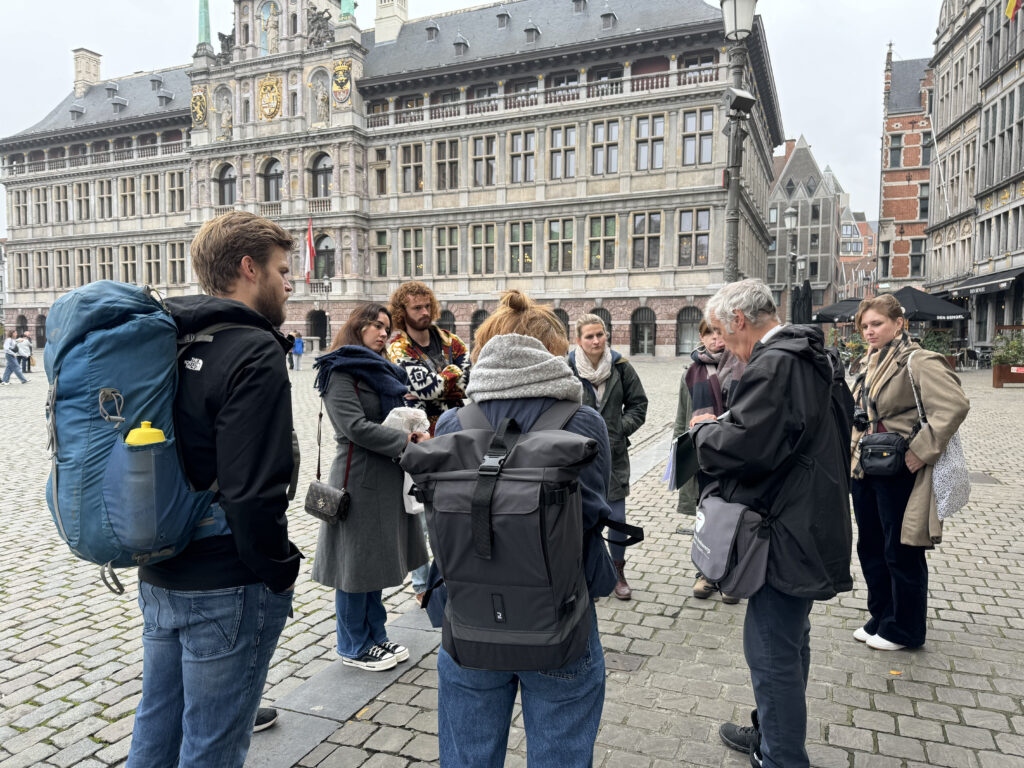
The exchange program took place in the provinces of Noord-Brabant, Zeeland (The Netherlands) and Flanders (Belgium) and offered young history enthusiasts the opportunity to delve deep into the historical events that shaped our modern world, providing an immersive experience in regions profoundly affected by the war. Participants engaged in a variety of creative projects, including video production, podcast creation, and historical storytelling, in order to explore and express the human stories behind the conflict.
As the exchange traversed the landscapes where pivotal battles were fought, participants gained invaluable insights into the war’s legacy. This program wasn’t just about learning history; it was about bringing it to life through modern media. Participants worked collaboratively with fellow participants, shared perspectives and improved skills in storytelling and digital media.
Different people were interviewed, different sites were visited and the essence of historical sites were captured on film. Participants contributed to preserve the vital memories for future generations.
The 80th anniversary of Breda’s liberation marked a poignant tribute to its freedom from Nazi occupation on October 29, 1944, by the Polish 1st Armoured Division. The exchange program attended different commemorations, ceremonies, historical reenactments, and educational programs, honoring the bravery of the liberators and the resilience of the residents.
At the Maczek Memorial, the program focused on the role of the Poles during the liberation of Noord-Brabant where we had the unique opportunity to meet with the granddaughter of General Maczek.
The program attended exhibitions and cultural events, fostering reflection and gratitude, while strengthening the bonds of peace and remembrance across generations.

On day two, the exchange moved to Belgium, were it visited the German War Cemetery in Lommel, a significant site, holding the remains of over 39,000 German soldiers from WWII. It serves as a poignant reminder of the war’s human cost and fosters reflection on reconciliation and peace. During a guided tour many questions were asked and participants learned a great deal through the information shared by the experts.
The cemetery’s vast expanse, the number of graves, and atmosphere make it an impressive and somber place. During the visit, podcasts and videos were created and historical research was conducted, all trying to create an impression of the scale of loss and the importance of remembering all who perished.

Day three brought the exchange to the city of Antwerp where a visit to MAS Antwerp was planned.
The exhibition about Antwerp during the Second World War showed the impact of World War II on Antwerp and its inhabitants. Antwerp was particularly hard hit by the war. Nazi terror, persecution of Jews and military violence killed 25,000 people. Captivating personal stories made this important part of history tangible.
During a guided tour through the city, participants learned more about the difficulties of living in Antwerp during the Second World War. What did it mean to live in an occupied city? What choices did city residents make: flee, cooperate with the occupier or resist? What would you do?

On day four, a visit to Kazerne Dossin was planned.
In July 1942 Kazerne Dossin (Dossin Barrack), a former military base in Mechelen, was designated Sammellager, a transit camp for Jews, Roma and Sinti. Between July 1942 and September 1944, thousands of Jews and gypsies were transported from here to concentration camps in Germany. Nowadays, Kazerne Dossin is a Memorial, Museum and Documentation Centre on Holocaust and Human Rights.
The museum presents the history of the Holocaust, the German occupation, antisemitism and collaboration in Belgium. The Holocaust is presented from the perspectives of both the perpetrators and the victims. Spread over the floors of the museum the deportees look at the visitors from enormous photo walls. Through these photographs the victims regain an identity, which sharply contrasts with the photos of the goaded masses that persecuted them. The museum not only tells the story of the Second World War, but chooses a broader view.
Participants had time to conduct their own research, explore the museum, record podcasts and videos and interviewed stakeholders, guides and experts.

Sign up and join one of the exchange trips across Europe to keep the history of the Second World War alive!
© LRE Foundation - 2025